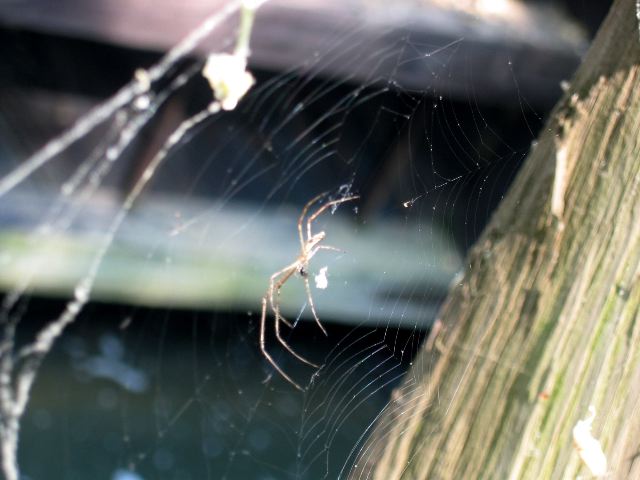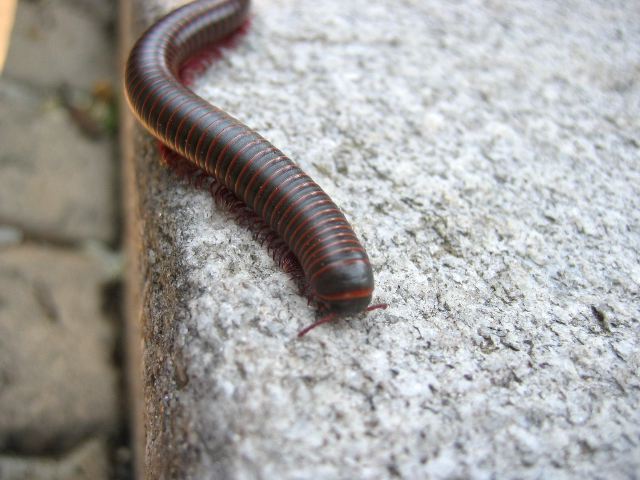May 31, 2004
Owney, the Mail Mascot
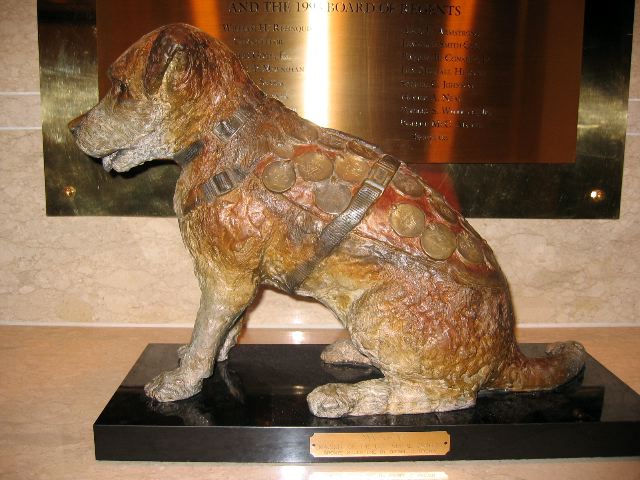
Owney, mascot of the railway mail service, on display at the National Postal Museum.
May 30, 2004
Too cool for you
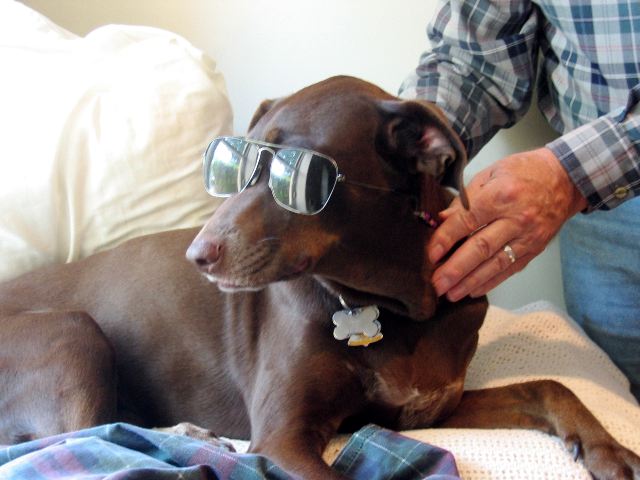
Sisu in shades. Sisu turns four right around now (we don't know her exact birthdate since she's a pound puppy, but it was right around the beginning of June 2000). She's obviously calmed down a lot in four years. Now she's so cool she can't even be bothered to put on her own sunglasses. ;-)
May 29, 2004
May 28, 2004
Union Station

Union Station, Washington, D.C. A little history:
At the time it was built, the Station covered more ground than any other building in the United States and was the largest train station in the world. The Station sits on the edge of an area once known as "Swampoodle," an infamous shantytown located on the sewery remnants of Timber Creek. The total area occupied by the Station and the terminal zone was originally about 200 acres and included 75 miles of tracks. In fact, if put on its side, the Washington Monument could lay within the confines of the Station's concourse.
Of course the history page doesn't mention it, but this great hall is lined around the top with statues of Roman Soldiers, all of whom were retrofitted w/"modesty shields" to hide their goods. Apparently the shields don't cover everything if you look in the right place.
May 27, 2004
May 26, 2004
Little Locks & Dams
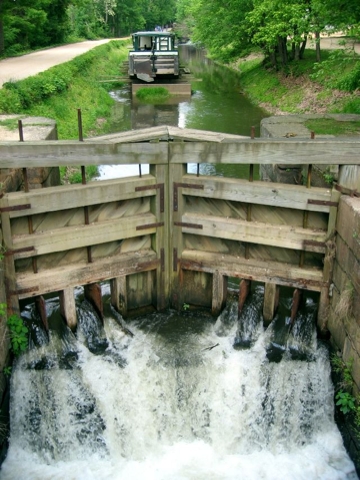
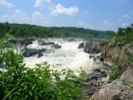 One of the many lock & dam combos along the C & O Canal near the Great Falls of the Potomac River (pic at right; click to enlarge).
One of the many lock & dam combos along the C & O Canal near the Great Falls of the Potomac River (pic at right; click to enlarge).
The C&O Canal follows the route of the Potomac River for 184.5 miles from Washington, D.C. to Cumberland, MD. The canal operated from 1828-1924 as a transportation route, primarily hauling coal from western Maryland to the port of Georgetown in Washington, D.C.
The C&O has become one of D.C.'s great green spaces—a narrow but quiet, beautiful, and relatively smooth (for biking, running, or walking) park that runs for miles and miles. In an area where 28 to 43 square miles of green space disappear every day, something like the C&O is a godsend.
May 25, 2004
Ruby Slippers

 Dorothy's ruby slippers from The Wizard of Oz. The National Museum of American History contains a tiny little room with "pop culture" objects such as this, including an actual "phaser" from previously noted, the museum was a disappointment in the aggregate, but I have to admit it's got some cool objects scattered around its cavernous spaces.
Dorothy's ruby slippers from The Wizard of Oz. The National Museum of American History contains a tiny little room with "pop culture" objects such as this, including an actual "phaser" from previously noted, the museum was a disappointment in the aggregate, but I have to admit it's got some cool objects scattered around its cavernous spaces.
May 24, 2004
Time
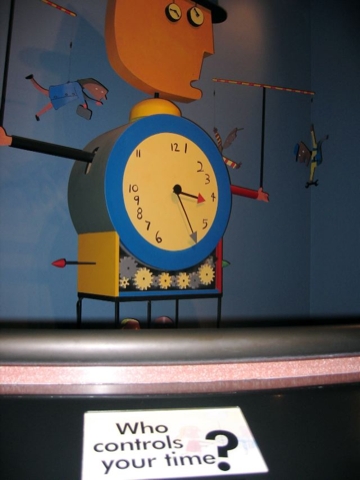
A display at the National Museum of American History asks a provocative question: Who controls your time? So how do you answer?
May 23, 2004
Cog

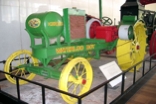 Closeup of a cog in the drivetrain of this old tractor (right; click to enlarge). The National Museum of American History has a small collection of agricultural implements on display, but the big exhibit when we went (about two weeks ago) was "America On the Move," which purports to explore how transportation transformed America. Shockingly, the exhibit is sponsored by General Motors, so you won't be surprised to learn that the exhibit presents bikes, trains, buses, and trolley or tram systems as quaint and outdated, while praising the growth of the private automobiles. It barely mentions the fact that GM and other automakers worked hard to put streetcars out of business all over the country in the 1940s and 1950s so that people would have no alternative to driving cars (or riding in buses made by GM).
Closeup of a cog in the drivetrain of this old tractor (right; click to enlarge). The National Museum of American History has a small collection of agricultural implements on display, but the big exhibit when we went (about two weeks ago) was "America On the Move," which purports to explore how transportation transformed America. Shockingly, the exhibit is sponsored by General Motors, so you won't be surprised to learn that the exhibit presents bikes, trains, buses, and trolley or tram systems as quaint and outdated, while praising the growth of the private automobiles. It barely mentions the fact that GM and other automakers worked hard to put streetcars out of business all over the country in the 1940s and 1950s so that people would have no alternative to driving cars (or riding in buses made by GM).
In all, I found the National Museum of American History very very sad. It's a huge collection with lots of great items, but its interpretive materials leave a lot to be desired. It's also horribly arranged, with a display of instruments next to a display of printing technology next to an exhibit of Beatles photos next to a giant dollhouse. Where's the rhyme or reason in that? There isn't any, so you could spend all day in the place and leave with little clue as to how one exhibit relates to another. And this is our national museum. Pathetic.
May 22, 2004
Calder

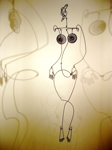 Miniature version of Alexander Calder's "East Building Mobile" made especially for the National Gallery. The Gallery has a terrific collection of Calder's work, including his wire sculpture, "Aztec Josephine Baker" (right; click to enlarge). Unfortunately, the huge version of the "East Building Mobile" is currently not on display; it's in a shop somewhere being "refurbished" or something because we were told it had begun to rust and wasn't moving freely in the breeze as it was designed to do. If you want to see it, visit the East Wing of the National Gallery after April 2005. In the meantime, you can still see the miniature, as well as lots of other great pieces. The Calder Foundation website has also put images of his work online with better pictures than I'll probably ever take, so go there for the real deal.
Miniature version of Alexander Calder's "East Building Mobile" made especially for the National Gallery. The Gallery has a terrific collection of Calder's work, including his wire sculpture, "Aztec Josephine Baker" (right; click to enlarge). Unfortunately, the huge version of the "East Building Mobile" is currently not on display; it's in a shop somewhere being "refurbished" or something because we were told it had begun to rust and wasn't moving freely in the breeze as it was designed to do. If you want to see it, visit the East Wing of the National Gallery after April 2005. In the meantime, you can still see the miniature, as well as lots of other great pieces. The Calder Foundation website has also put images of his work online with better pictures than I'll probably ever take, so go there for the real deal.
May 21, 2004
People Mover
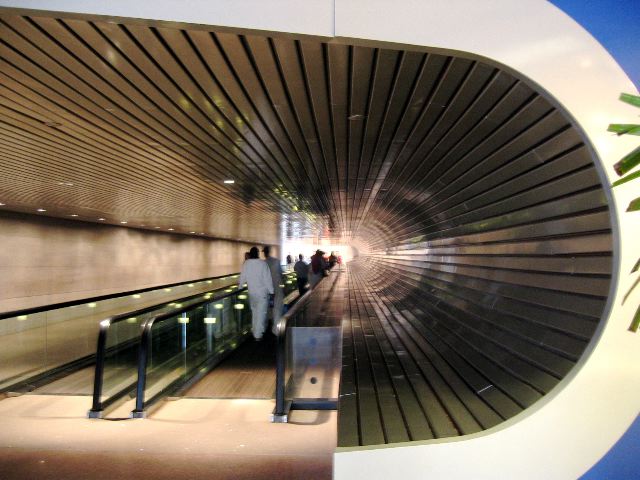
People mover tunnel in the East Wing of the National Gallery of Art. I'd never heard about it before coming to D.C. the first time, but the National Gallery is definitely on my list of must-see D.C. places. In addition to the great art (I have some pics of the Calder mobiles coming), the building's design is interesting, as well. No, it's not like the most incredible piece of architecture you'll ever see, but little details like this (and the central rotunda and the fountain running into a glass wall near this tunnel and the cafeteria) make it worth your while. Oh yeah, and the art; I recommend the works by Monet, but I'm an art know-nothing. My sister's favorite is Argenteuil (The Promenade at Argenteuil). For some reason, on this most recent visit, I was most interested in The Houses of Parliament, Sunset and Waterloo Bridge, Gray Day.
May 20, 2004
polishing starbucks
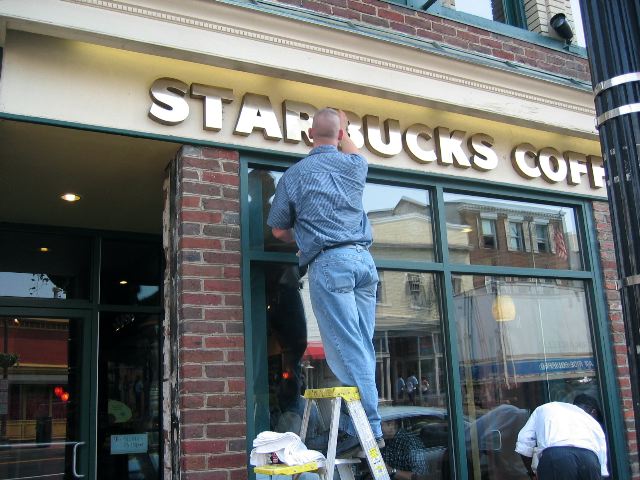
A team of workers polishes the brass sign on a Starbucks on M Street in Georgetown. Image is everything, and it looks like the Starbucks image could use a little polishing. Punitive Art says Starbucks is not evil, but opinions vary.
May 19, 2004
ticket to goodness
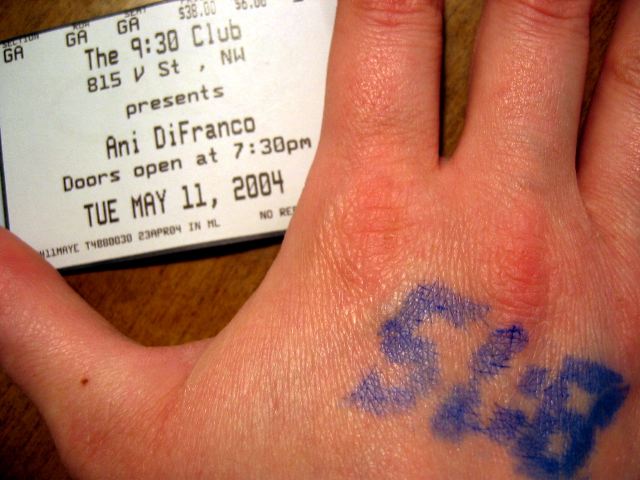
A ticket and handstamp from the Ani DiFranco show last week. I was planning to take my camera to get some shots (and maybe short movies) of the show, but at the last minute I decided not to bring it because I worried they might not let me in with it. Stupid me; they didn't check for things like that at all. Next time.
Oh, it was a great show.
May 18, 2004
May 16, 2004
Black Squirrel
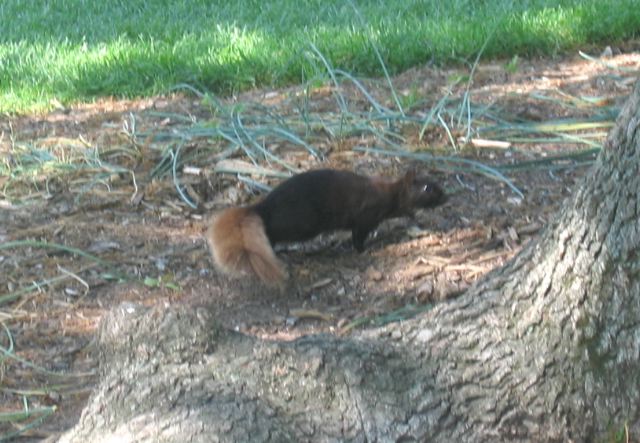
Black squirrel on the grounds of the National Cathedral. I don't know if I'd ever seen one before, but it appears they're thriving in many places.
May 15, 2004
Subway Reflection
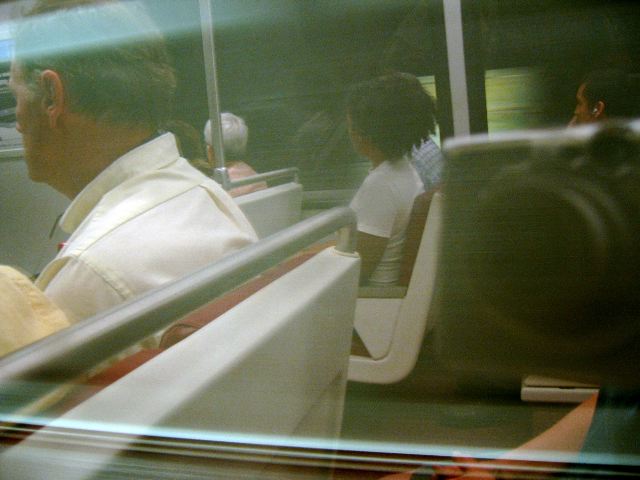
Passengers reflected in the window of the Yellow line on the D.C. metro. That's my dad on the left. I think my family enjoyed the novelty of the metro, but after a week of touristing in D.C., they're looking forward to getting back home to their cars and to not having to enter dark holes to get where they're going. Long escalators are not their idea of fun. Mine neither, really, but that's just part of living in D.C.
May 14, 2004
Horsie!
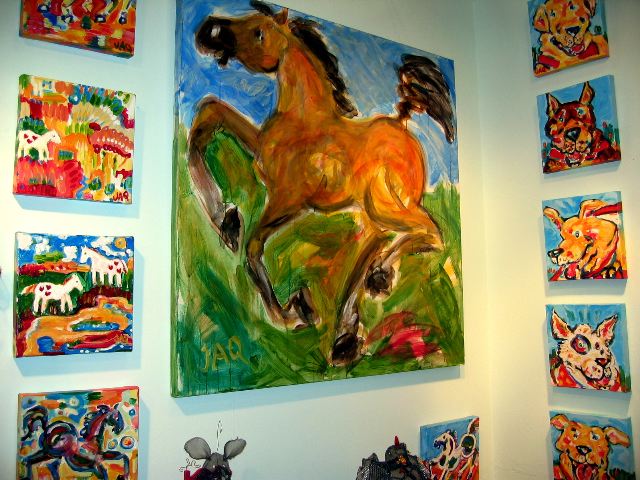
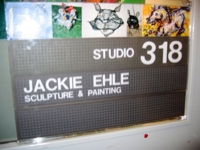 Animal art by Jackie Ehle, one of the artists with a studio in the Torpedo Factory. Each studio is both workspace and display space, and if the artists are there, you can see many of them hard at work on their current projects. I'm sure not every artist would work well in such conditions, but it's an excellent way for artists to pool their promotional energies and distribute the costs of studio and display space. Artist collectives like this should cover the country!
Animal art by Jackie Ehle, one of the artists with a studio in the Torpedo Factory. Each studio is both workspace and display space, and if the artists are there, you can see many of them hard at work on their current projects. I'm sure not every artist would work well in such conditions, but it's an excellent way for artists to pool their promotional energies and distribute the costs of studio and display space. Artist collectives like this should cover the country!
May 13, 2004
Torpedo Factory
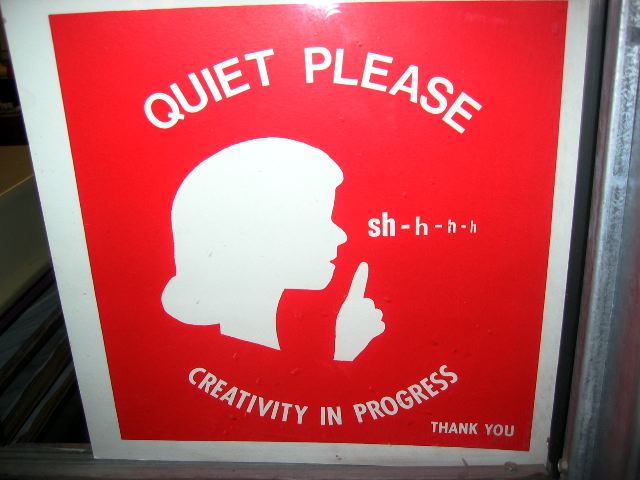
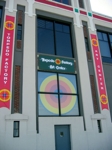 A sign in the Torpedo Factory, an artists' collective in Alexandria, VA. It's a very cool place, right on the Potomac and filled with lots of terrific sculpture, painting, jewelry, photagraphy, textiles, and more. Plus, Alexandria is a nice little escape from the urbanity of D.C. Very quiet and mellow in comparison. Take the Yellow or Blue metro line to Braddock Rd, then hop the Alt 5 bus and you're there.
A sign in the Torpedo Factory, an artists' collective in Alexandria, VA. It's a very cool place, right on the Potomac and filled with lots of terrific sculpture, painting, jewelry, photagraphy, textiles, and more. Plus, Alexandria is a nice little escape from the urbanity of D.C. Very quiet and mellow in comparison. Take the Yellow or Blue metro line to Braddock Rd, then hop the Alt 5 bus and you're there.
May 12, 2004
Marimekko
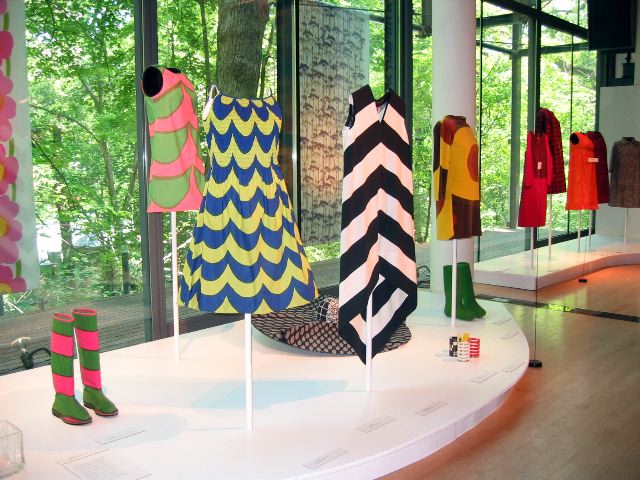
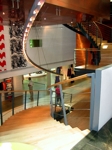
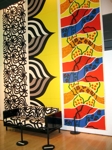 Marimekko show at the Finish Embassy in D.C. Finland holds a special place in my heart since I spent a year there nearly a decade ago, and my sister loves clothing design and fiber arts, so the Marimekko show was a natural destination for us. I don't know which was more impressive, the bright printed fabrics and clothing designs, or the architecture of the Finnish Embassy. The gracefully curved staircase (at left) is just one of the highlights of the building, which features lots of natural wood blended ingeniously with glass and steel to create the sort of techno-organic fusion that marks so much of Finnish design. Very cool, and worth a visit if you're in D.C. The embassy is also currently promoting a show at the National Museum of Women in the Arts entitled Nordic Cool: Hot Women Designers, which runs through Sept. 12 and features several Finnish artists.
Marimekko show at the Finish Embassy in D.C. Finland holds a special place in my heart since I spent a year there nearly a decade ago, and my sister loves clothing design and fiber arts, so the Marimekko show was a natural destination for us. I don't know which was more impressive, the bright printed fabrics and clothing designs, or the architecture of the Finnish Embassy. The gracefully curved staircase (at left) is just one of the highlights of the building, which features lots of natural wood blended ingeniously with glass and steel to create the sort of techno-organic fusion that marks so much of Finnish design. Very cool, and worth a visit if you're in D.C. The embassy is also currently promoting a show at the National Museum of Women in the Arts entitled Nordic Cool: Hot Women Designers, which runs through Sept. 12 and features several Finnish artists.
May 11, 2004
Gargoyle View
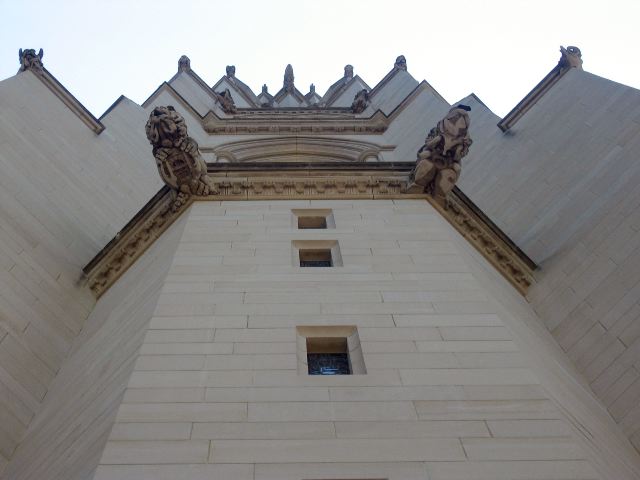
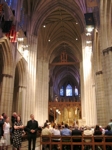 National Cathedral exterior. I accompanied the family to services at the cathedral for Mother's Day. The sermon we heard hasn't made it online yet, but it was a good one—very political and basically saying there's no glory in the Iraq war because we never should have been there in the first place. It's good to know prominent American clergy are willing to speak out, not that anyone in power appears to be listening.
National Cathedral exterior. I accompanied the family to services at the cathedral for Mother's Day. The sermon we heard hasn't made it online yet, but it was a good one—very political and basically saying there's no glory in the Iraq war because we never should have been there in the first place. It's good to know prominent American clergy are willing to speak out, not that anyone in power appears to be listening.
May 10, 2004
Vietnam Memorial
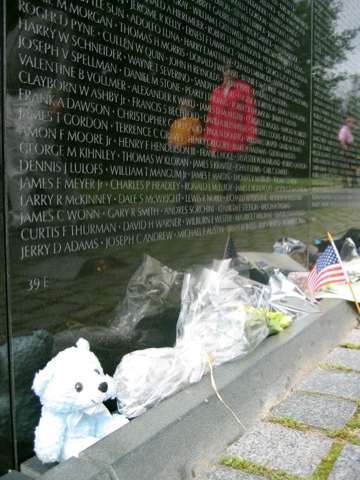
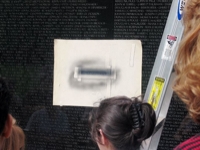 A teddy bear left in remembrance of the fallen at the Vietnam Memorial. Seeing all these monuments in one day is a lot to take in, but Vietnam Memorial is the most serious and meditative of the bunch. It sits below the level of the ground so it doesn't really call attention to itself at a distance, and the names are so small and tightly packed on the long long wall that even if you're just casually walking along you can't help realizing what a serious toll the Vietnam war had on American lives. (The names are listed in the order in which the people were killed.) And that toll is still being taken. It just so happened that while we were there, they were adding another name—the name of a soldier who died recently of complications from a wound suffered in Vietnam. (Part of the apparatus for the engraving is shown in the little picture; click to enlarge.) The message of tragic waste of human life is even more poignant at the moment when we're engaged in yet another war which has no clear objective or end, and which could have been avoided. We should have forced George Bush and Dick Cheney to spend a week holding vigil at the Vietnam Memorial before they started this most recent catastrophe. Maybe they would have come to their senses.
A teddy bear left in remembrance of the fallen at the Vietnam Memorial. Seeing all these monuments in one day is a lot to take in, but Vietnam Memorial is the most serious and meditative of the bunch. It sits below the level of the ground so it doesn't really call attention to itself at a distance, and the names are so small and tightly packed on the long long wall that even if you're just casually walking along you can't help realizing what a serious toll the Vietnam war had on American lives. (The names are listed in the order in which the people were killed.) And that toll is still being taken. It just so happened that while we were there, they were adding another name—the name of a soldier who died recently of complications from a wound suffered in Vietnam. (Part of the apparatus for the engraving is shown in the little picture; click to enlarge.) The message of tragic waste of human life is even more poignant at the moment when we're engaged in yet another war which has no clear objective or end, and which could have been avoided. We should have forced George Bush and Dick Cheney to spend a week holding vigil at the Vietnam Memorial before they started this most recent catastrophe. Maybe they would have come to their senses.
Nah, I don't think so, either.
May 09, 2004
May 08, 2004
WWII Veterans Memorial
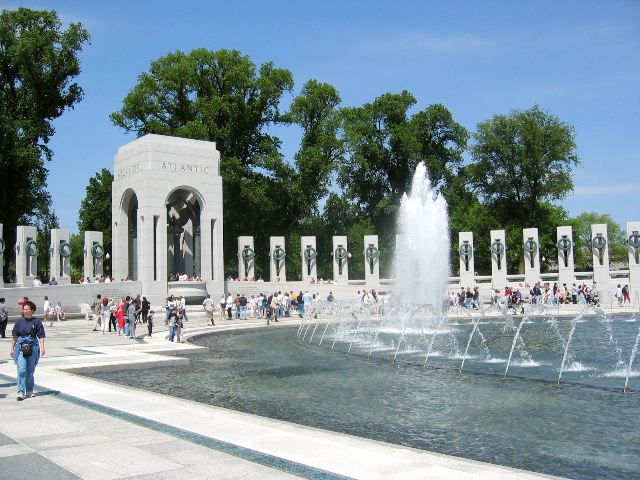
![]() The new World War II Veterans Memorial on the Mall in D.C. To the right is a panoramic view of 8 photos digitally spliced together (click to enlarge). The WW II Memorial just opened two or three weeks ago and is currently the sight to see in D.C. It's grand, which may be a good thing. Like the Korean War Memorial, the WWII Memorial reminds visitors that freedom is not free, but it does less (read: nothing I could see) to explain to/remind visitors what the price of freedom is. My impression after seeing all three war memorials on the mall yesterday (WWII, Korea, Vietnam), is that the WWII memorial is the least thoughtful and contemplative of the bunch. That is not to diss it, exactly, only to say that it doesn't seem to be trying to say as much as the others, and that's probably too bad. The people who fought, died and sacrificed in WWII deserve more, as do future generations who will learn little from this monument except that the war was important for some vague reason. Of course, my impression might change with more time or another visit.
The new World War II Veterans Memorial on the Mall in D.C. To the right is a panoramic view of 8 photos digitally spliced together (click to enlarge). The WW II Memorial just opened two or three weeks ago and is currently the sight to see in D.C. It's grand, which may be a good thing. Like the Korean War Memorial, the WWII Memorial reminds visitors that freedom is not free, but it does less (read: nothing I could see) to explain to/remind visitors what the price of freedom is. My impression after seeing all three war memorials on the mall yesterday (WWII, Korea, Vietnam), is that the WWII memorial is the least thoughtful and contemplative of the bunch. That is not to diss it, exactly, only to say that it doesn't seem to be trying to say as much as the others, and that's probably too bad. The people who fought, died and sacrificed in WWII deserve more, as do future generations who will learn little from this monument except that the war was important for some vague reason. Of course, my impression might change with more time or another visit.
UPDATE: Recent Washington Post feature the WWII Memorial.
May 07, 2004
Airport Metro
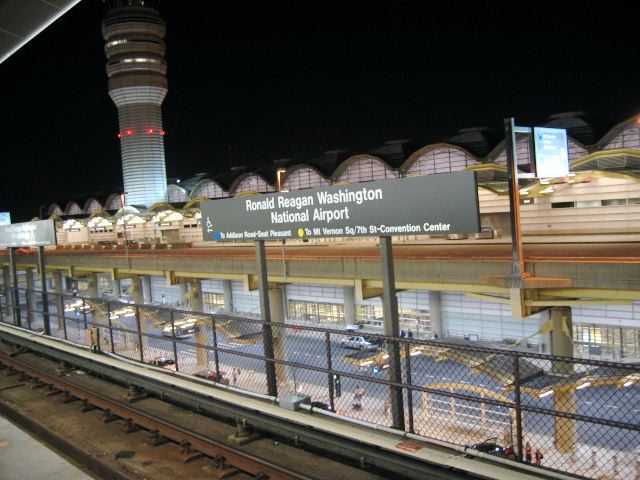
Ronald Reagan Washington National Airport stop on the yellow line. My sister flew in last night for a visit, and we'll be joined shortly by my parents. We're planning to be tourists for a week, so I hope that will mean some good touristy snaps will appear here soon.
May 06, 2004
Yolk
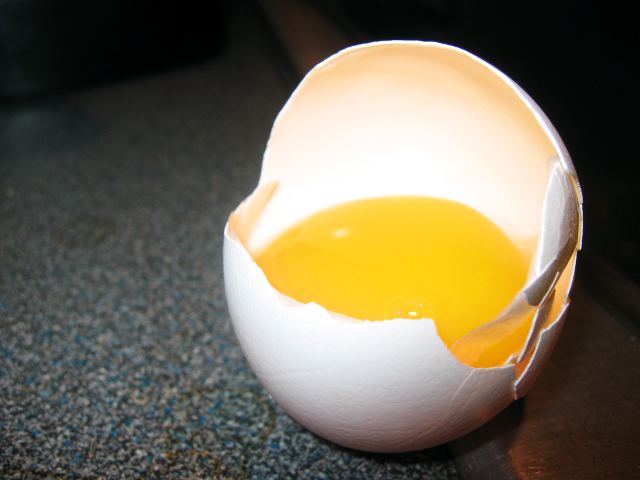
Egg yolk in shell. Today is my last 1L final. I am this yolk. I don't know what that means, either.
May 05, 2004
Sculpture Spinning
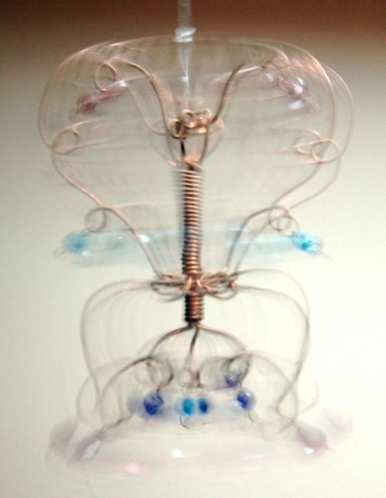
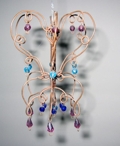 Mini "chandelier" sculpture spinning. At right is the sculpture at rest (click image to enlarge). This is another work of art made by my sister, proprietor and artistic director of Cassiopeia Productions. Don't you think she needs a website to showcase her talents? She's arriving for a visit tomorrow, so perhaps I can ask her about it. I think she could make a really cool mobile out of several of these chandeliers in different sizes, balanced on wires and spinning around each other. Of course, she's busy with lots of other things, too. I
Mini "chandelier" sculpture spinning. At right is the sculpture at rest (click image to enlarge). This is another work of art made by my sister, proprietor and artistic director of Cassiopeia Productions. Don't you think she needs a website to showcase her talents? She's arriving for a visit tomorrow, so perhaps I can ask her about it. I think she could make a really cool mobile out of several of these chandeliers in different sizes, balanced on wires and spinning around each other. Of course, she's busy with lots of other things, too. I
May 04, 2004
The Boot
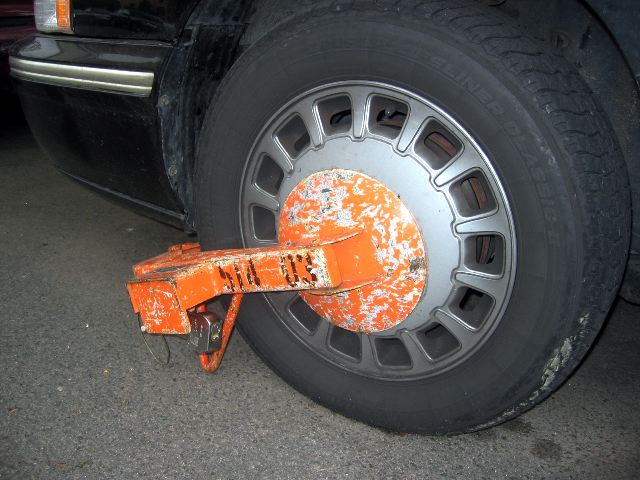
A "boot" immobilizes a car on a Dupont neighborhood street. I see about one of these per week around here. I guess this is what happens if you don't pay your parking tickets?
May 03, 2004
1L Finals
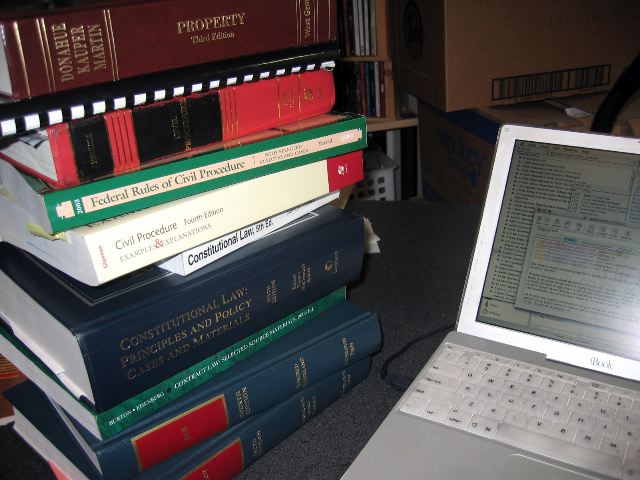
The huge stack of books and the trusty iBook that have gotten me through the first year of law school. Finals are half over, which means I'm finished with the three books on the bottom and three of the books near the top (Contracts/Sales and Civil Procedure). Constitutional Law is tomorrow, and Property is Thursday. The best thing about finals is that they're something about which I don't feel too ambivalent; I'll be very glad when they're over. I'm sure everyone who knows me will be glad, too, because finally perhaps I'll be able to talk about something more interesting than the vestiture clause and whether landlords have a duty to maintain and repair (generally they do today, but they didn't at common law). Fun stuff.
May 02, 2004
Lies!
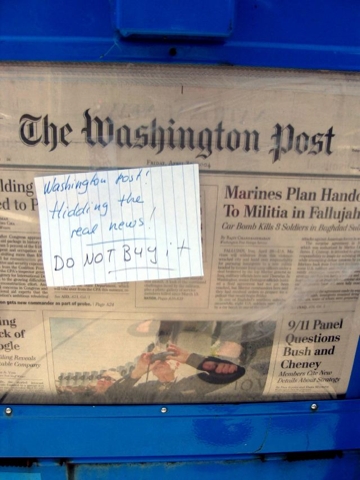
Handwritten note taped to a Washington Post vending machine on the corner of our block. In case it's difficult to read, the note says "Washington Post! Hidding the real news! Do not buy it!" I wonder what "hidding" means. More important, what's the "real" news and where do I find it? If you're going to tell me not to buy the Post, at least point me to a recommended alternative.
Who would take the time to handwrite a note like this and tape it to a newspaper vending machine? Why?
May 01, 2004
Swiftly Tilting Tree
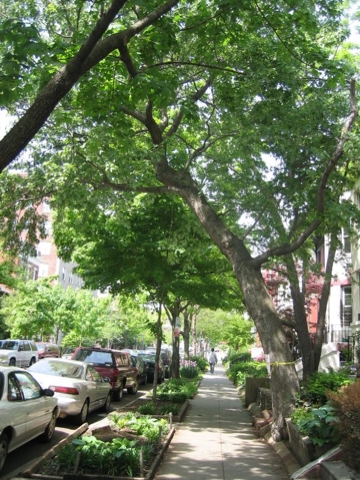
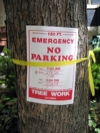
 This tilting tree just down the street may be on the chopping block. As the picture at left indicates, someone is going to be doing tree work around here in a couple of days, and as the picture at right indicates, this tree may not be very securely rooted. Are those berms going through the tree? It certainly looks like it, as if the tree has grown up around the landscaping berms. And since this tree leans so far one way, I wouldn't be surprised if someone decided it was a danger. I guess I'll know in a few days if one day I take the dog for a walk and this tree is gone. This tree stands right behind the tree that was removed last week. At this rate, the street is going to be treeless within the month!
This tilting tree just down the street may be on the chopping block. As the picture at left indicates, someone is going to be doing tree work around here in a couple of days, and as the picture at right indicates, this tree may not be very securely rooted. Are those berms going through the tree? It certainly looks like it, as if the tree has grown up around the landscaping berms. And since this tree leans so far one way, I wouldn't be surprised if someone decided it was a danger. I guess I'll know in a few days if one day I take the dog for a walk and this tree is gone. This tree stands right behind the tree that was removed last week. At this rate, the street is going to be treeless within the month!


